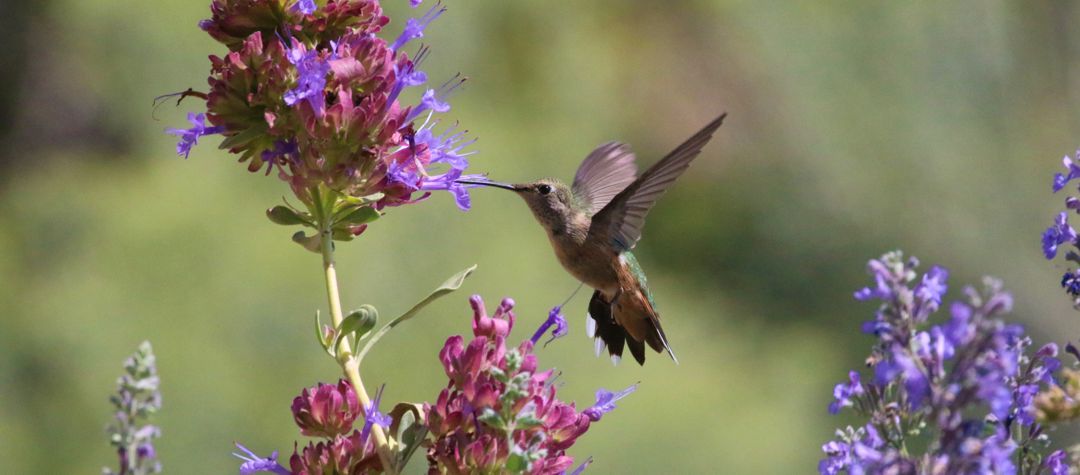
As flowers bloom and gardens thrive, our neighbors appear more frequently. I’m not talking about the neighbors that borrow a cup of sugar, but the friendly critters among us. Whether it be the lizards skimming across rocks, or the deer munching on cabbage, it’s important to learn to coexist with the wildlife in your yard. Creating a habitat does not require a lot of land to do so, in fact, there could be wildlife already living in your yard. Understanding how to tend to the species that live in our yards and how to welcome new wildlife is key to creating a yard habitat.
The first step in creating habitats for wildlife is planning the landscaping. Identifying whether or not the existing plants in place are providing shelter or food sources will determine if these plants need to be removed. If the plants appear damaged, consider removal as well (note that dead trees are homes to over 400 species of birds so check for nests before removal). By creating a blueprint of the desired yard it will allocate for spacing issues and allow time for larger plants like trees to grow.
Next, consider what species you want to attract. In order to attract more birds, birdbaths, and birdhouses are great options for shelter. Planting nectar-rich plants such as Honeysuckle, and Cardinal can attract hummingbirds, bees, and butterflies. Stumps, shady leaves, and rock piles are good for attracting frogs, lizards, and other amphibians that prey on destructive insects. For avid gardeners, consider planting ripe fruits for butterflies or tomatoes as hostplants for the larva. Plan this ahead of time in order to figure out the best spots in your yard for the desired wildlife.
It is important to note that homes of any size can welcome wildlife. Simple steps such as planting a window box for butterflies, or hanging bird feeders, can host beautiful species. And as beautiful as the wildlife may be, touching or disturbing these animals can harm them. Some predators prey on human scent and can put these critters in danger, so appreciate their beauty from a distance.
The final step is to plant or install the habitats. While it is recommended that trees are installed first, this process is not linear and can turn into a hobby. Once the habitat is complete, certify it through the National Wildlife Federation. Slowly watch your yard become more lively as new species are introduced through sustainable landscaping.
 Makynna Keefe is a research assistant for Mrs. Green and a self proclaimed ‘little green fact book‘. Growing up Makynna has always looked for new steps to take in order to protect our climate. Whether it be trips to the recycling center or lifestyle changes like shopping locally, Makynna is always looking for new ways to push herself and those around her.
Makynna Keefe is a research assistant for Mrs. Green and a self proclaimed ‘little green fact book‘. Growing up Makynna has always looked for new steps to take in order to protect our climate. Whether it be trips to the recycling center or lifestyle changes like shopping locally, Makynna is always looking for new ways to push herself and those around her.